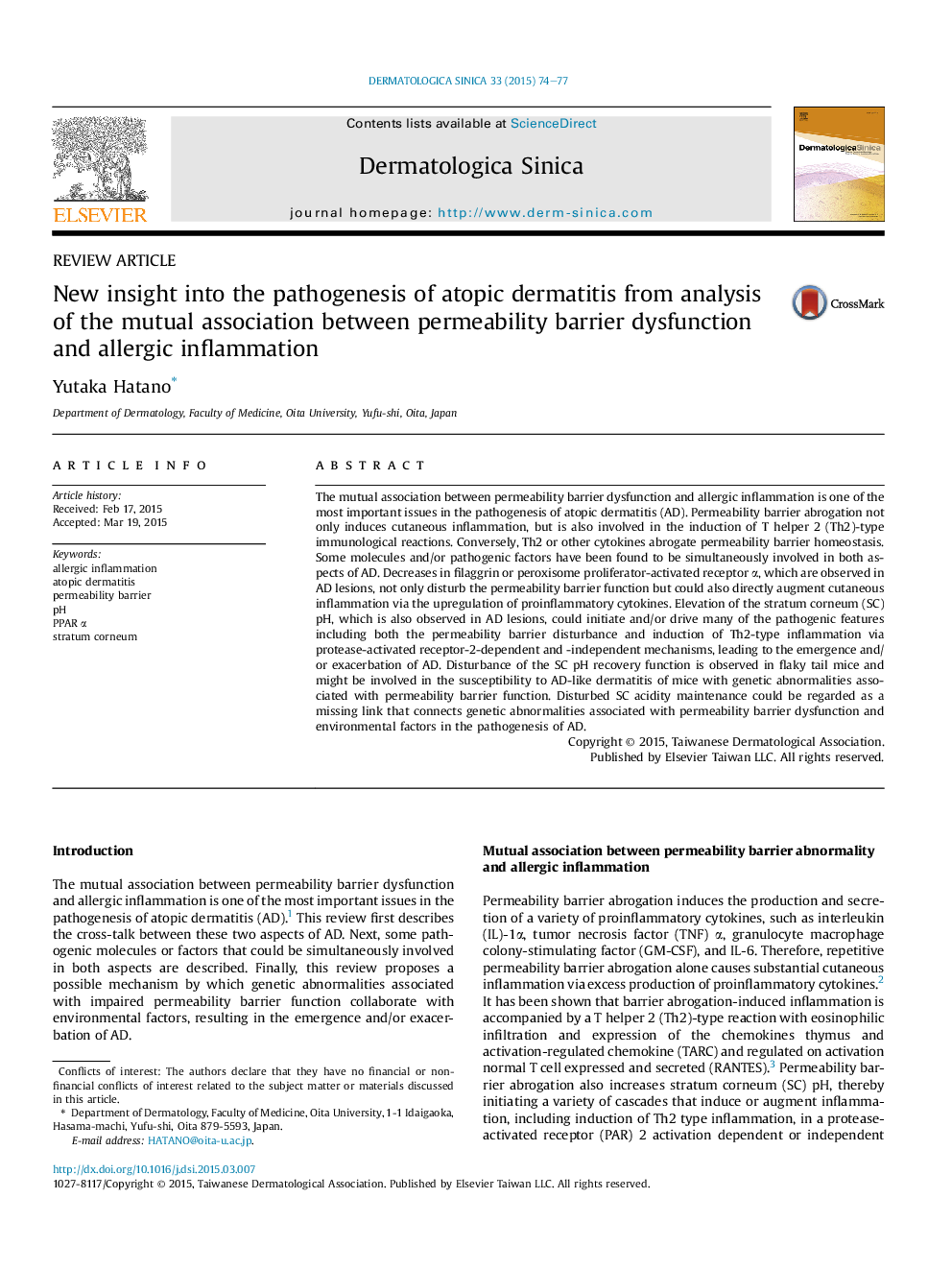| Article ID | Journal | Published Year | Pages | File Type |
|---|---|---|---|---|
| 3196437 | Dermatologica Sinica | 2015 | 4 Pages |
The mutual association between permeability barrier dysfunction and allergic inflammation is one of the most important issues in the pathogenesis of atopic dermatitis (AD). Permeability barrier abrogation not only induces cutaneous inflammation, but is also involved in the induction of T helper 2 (Th2)-type immunological reactions. Conversely, Th2 or other cytokines abrogate permeability barrier homeostasis. Some molecules and/or pathogenic factors have been found to be simultaneously involved in both aspects of AD. Decreases in filaggrin or peroxisome proliferator-activated receptor α, which are observed in AD lesions, not only disturb the permeability barrier function but could also directly augment cutaneous inflammation via the upregulation of proinflammatory cytokines. Elevation of the stratum corneum (SC) pH, which is also observed in AD lesions, could initiate and/or drive many of the pathogenic features including both the permeability barrier disturbance and induction of Th2-type inflammation via protease-activated receptor-2-dependent and -independent mechanisms, leading to the emergence and/or exacerbation of AD. Disturbance of the SC pH recovery function is observed in flaky tail mice and might be involved in the susceptibility to AD-like dermatitis of mice with genetic abnormalities associated with permeability barrier function. Disturbed SC acidity maintenance could be regarded as a missing link that connects genetic abnormalities associated with permeability barrier dysfunction and environmental factors in the pathogenesis of AD.
